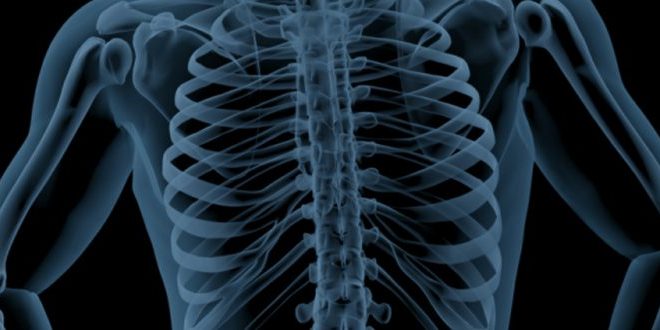Chiropractic Approaches to Headaches and Migraines
Headaches and migraines can be exhausting, affecting everything from productivity to sleep. Often, the true causes—such as spinal misalignment, jaw tension, or nerve irritation—go overlooked. By addressing the cervical spine, muscle patterns, TMJ dysfunction, and nervous system balance, chiropractic care helps relieve pressure and restore function. The result is not just symptom relief but long-term resilience, better posture, and improved energy.

If you’ve ever battled a headache that took you out of your day—or a migraine that put life on hold—you know it’s not “just a headache.” These episodes can derail your focus, disrupt your sleep, and drain your energy. For some, it means missing work, canceling plans, or shutting out the world until the pain passes. Over time, chronic headaches and migraines don’t just affect your body—they wear down your confidence and emotional resilience.
What makes it more frustrating is how often the root cause is overlooked. Over-the-counter meds and even prescription solutions might offer temporary relief, but they rarely stop the cycle. That’s because not all headaches are the same—and not all respond to the same approach.
At Mountain Movement Chiropractic & Natural Health, we don’t treat all headaches the same way—because they don’t come from the same place. Our chiropractic approach looks deeper: at spinal alignment, muscle tension, jaw position, nerve flow, and nervous system balance. We aim to correct the cause, not just dull the pain. That’s what sets chiropractic care apart—relief that goes beyond the surface, helping you reclaim your clarity, energy, and peace of mind.
Understanding the Root Causes
Cervical Spine Misalignments
The upper neck is closely tied to the nerves and muscles that influence head pain. Misalignments in this region can irritate surrounding structures and create referral patterns that present as tension or pressure around the head and face.
Muscle Tension (Neck, Shoulders, Jaw)
Tight muscles—especially in the upper traps, suboccipitals, and jaw—can pull on connective tissues and compress nerves, leading to tension headaches and even triggering migraines. These areas often store stress and adapt poorly to postural strain.
Poor Posture/Forward Head Carriage
With today’s screen-heavy lifestyle, many people carry their head too far forward, placing constant stress on the cervical spine and neck muscles. This not only compresses structures but alters how the nervous system processes sensory input—setting the stage for chronic headaches.
TMJ Dysfunction
Jaw misalignment or grinding (even at night) can create tightness and tension that radiate into the temples and head. Many people with TMJ issues don’t realize their jaw is contributing to their headache pattern.
Nerve Compression or Irritation
Pinched or irritated nerves in the upper spine, shoulders, or even jaw area can send incorrect signals to the brain, triggering pain and tension that feel like classic headache symptoms.
Stress and Nervous System Overload
Mental and physical stress keeps the body in a heightened state of alert (sympathetic dominance). This can result in muscle bracing, increased inflammation, and lowered pain thresholds—all of which contribute to recurring headaches.
Hormonal and Inflammatory Influences
Especially in migraines, underlying hormonal shifts or systemic inflammation can lower the body’s resilience to sensory triggers—turning minor imbalances into major pain episodes.
Types of Headaches That May Improve with Chiropractic Care
Tension Headaches
These are the most common, often described as a dull, aching pressure around the forehead, temples, or back of the head. They’re typically caused by:
- Chronic muscle tension in the neck, shoulders, or jaw
- Poor posture (tech neck, desk strain)
- Emotional or physical stress
Cervicogenic Headaches
These headaches originate in the cervical spine (neck) and radiate upward into the head. They're usually one-sided and often mistaken for migraines.
Common triggers:
- Misalignments in the upper neck
- Limited range of motion
- Repetitive strain or past injury (like whiplash)
Migraine Headaches
Migraines are more complex, often involving vascular changes, nerve sensitivity, and neurological overstimulation. They may present with:
- Throbbing pain (often one-sided)
- Nausea
- Light and sound sensitivity
- Visual disturbances (auras)
Underlying influences may include:
- Nervous system dysregulation
- Hormonal shifts
- Cervical misalignments
Cluster Headaches
These are intense, burning headaches that occur in cycles—often around the eye—and are typically short but severe.
Though less common, they may be influenced by:
- Nervous system imbalances
- Pressure around cranial nerves
How Chiropractic Care Supports Headache Relief
Cervical Spine Adjustments
The neck plays a major role in the development of many headache types, especially cervicogenic and tension headaches. Misalignments in the cervical spine can irritate surrounding nerves, restrict mobility, and place chronic strain on muscles that support the head.
Chiropractic adjustments work to:
- Restore proper alignment in the cervical vertebrae, relieving pressure from irritated nerves and joints.
- Improve mobility and movement in the neck and upper back, reducing the mechanical stress that contributes to recurring headaches.
- Reset neurological communication between the spine and brainstem, supporting better regulation of pain and muscle tone.
These adjustments are gentle, targeted, and based on your body’s specific needs—never forced or one-size-fits-all.
Myofascial and Muscle Release
Tension headaches are often driven by tight, overworked muscles that pull on the head and neck—creating pain that can radiate into the temples, eyes, or base of the skull. Trigger points in muscles like the suboccipitals, trapezius, sternocleidomastoid (SCM), and jaw are common culprits.
Through hands-on muscle and fascia work, we help:
- Release chronic tension in the areas most associated with head and neck pain.
- Improve blood flow and reduce inflammation in overworked tissues.
- Interrupt pain referral patterns, giving the nervous system a chance to reset and reduce sensitivity.
This work not only brings immediate relief but also helps retrain your body to hold less tension in the long run—especially when combined with posture and movement instruction.
TMJ and Jaw Tension Correction
Jaw tension is a hidden trigger in many chronic headaches, especially those felt in the temples, face, or behind the eyes. The TMJ (temporomandibular joint) connects the jaw to the skull and is closely tied to the cranial nerves, upper cervical spine, and muscles that influence head posture. When this joint is imbalanced—or when surrounding muscles are tight from clenching or grinding—it can create radiating pain patterns that mimic migraines or tension headaches.
At Mountain Movement, we:
- Assess jaw alignment and muscle coordination to identify dysfunction.
- Use gentle chiropractic techniques and soft tissue therapy to reduce tightness and restore natural jaw movement.
- Coordinate care with cervical spine work, since the jaw and neck often compensate for one another.
When TMJ tension is resolved, many patients experience reduced headache frequency and intensity—especially when stress or nighttime grinding have been major contributors.
Nervous System Regulation
Your nervous system is constantly balancing two major gears:
- Sympathetic mode (fight, flight, tension)
- Parasympathetic mode (rest, recover, repair)
Many headache and migraine sufferers live in a constant state of sympathetic dominance—tight muscles, shallow breathing, stress sensitivity, and poor sleep. Over time, this nervous system overload can lower your threshold for pain and increase your risk of recurring headaches.
Chiropractic care supports neurological regulation by:
- Stimulating parasympathetic pathways through spinal adjustments and cranial techniques.
- Reducing the stress load on the brainstem and spine.
- Helping the body shift from tension to recovery mode, naturally lowering inflammation and pain perception.
This is a key reason why so many patients report better sleep, improved focus, and reduced anxiety alongside their headache relief. When the nervous system is supported—not just medicated—the results last longer and go deeper.
Posture and Ergonomic Correction
Your posture—especially how you hold your head throughout the day—has a massive influence on headache frequency and severity. Tech-heavy lifestyles have created a surge in forward head posture, where the head shifts out in front of the body, placing extra strain on the cervical spine, jaw, and upper back.
Even subtle daily patterns like:
- Hunching at a computer
- Looking down at a phone
- Sleeping with poor head support
…can all add up to chronic tension and poor spinal alignment.
At Mountain Movement, we:
- Evaluate your posture and movement habits to identify how your body is compensating.
- Provide movement instruction that retrains your nervous system to hold alignment naturally.
- Teach ergonomics and daily corrections that reduce mechanical stress on your spine and muscles.
These changes often make a dramatic difference—not just in reducing headaches, but in improving energy, posture, and body awareness overall.
Relief Begins with Realignment
Headaches are rarely just about what’s happening in your head—they’re often symptoms of a deeper imbalance in the body. Whether it’s chronic tension, poor posture, nerve interference, or a stressed nervous system, these layers of dysfunction build up over time until your body signals for help—often through pain.
Chiropractic care doesn’t just chase the pain; it works to realign the spine, reset muscle patterns, and calm the nervous system. By restoring balance where it matters most, your body can begin to function with clarity again—reducing the intensity, frequency, and unpredictability of headaches.
Real change doesn’t come from short-term fixes. It comes from supporting your body’s ability to heal from the inside out.
Contact Mountain Movement Chiropractic & Natural Health
📍 1901 Laurens Road Suite E, Greenville, SC 29607
📞 (864) 448-2073
🌐 mountainmovementcenter.com
💬 Message us on Facebook
📅 Join Dr. Day at his weekly movement workshop with Bon Secours Well Walkers

We Treat the
Toughest Cases
We'd love to talk with you about yours. Ask us anything and we will get back to you with a detailed answer about your case.

.jpg)




